“The important thing is not to stop questioning. Curiosity has its own reason for existence. One cannot help but be in awe when he contemplates the mysteries of eternity, of life, of the marvelous structure of reality. It is enough if one tries merely to comprehend a little of this mystery each day.” Albert Einstein
Now that summer is almost here at Sugarloaf Cottage in the Snowy Mountains Australia, a big portion of the plants have leafed out and are starting to flower, and some are even starting to fruit. The bees and butterflies are having a wonderful time collecting all the pollen.
I’ve started foraging for mushrooms for my meals, herbs for my herbal tea's and water spritzer's, and before I know it the blackberry trees along the creek will be fruiting. Whilst many of the plants are easy to recognise, there are various species that look alike - so at times I do have to make certain I know what I am looking for. Also there are many plants on my property that I am not 100% sure what they are.
I have started a herbarium, it is an identification book where I can store my collection of dried plants in and write my notes and observations in.
What Is A Herbarium?
A herbarium is a collection of plant specimens preserved or pressed on a specimen sheet. The specimen sheet is labelled with important data and facts and then filed in an organised system. Ultimately, it is a library of dried plant specimens used for both education and research.
Typically, the plants are flattened, dried and mounted on uniformly sized, archival paper, but some herbarium's also include mosses, algae, fungi or lichens in archival paper packets, seeds, wood sections, pollen, microscope slides, DNA extractions or jars of plant parts preserved in alcohol or glycerin.
Formally, Herbarium specimens are always accompanied by a label that indicates the location where the plant was growing, the collector and the date collected. It is also good practice to include any observations and information about the appearance of the plant and the context or habitat where it was found. Each herbarium specimen is assigned a unique accession number, which functions like the catalogue number of a book in a library.
But rules are meant to be broken, so when designing your own herbarium just listen to your heart and follow your creative instinct.
Why a Herbarium?
Whilst plant identification books are a very valuable resource, and I recommend everyone has one, but unless you have someone to show you what the plants are, the books can have several photos or drawings where the plants look similar and make it hard to distinguish between.
With a herbarium, you can take samples of the plants in your own region and find out what they are later. Plus they look beautiful and make for a wonderful coffee table book or gift.
When I take short road trips in the future I would love to create a herbarium for all the various regions I travel to, its a great way to learn about the area and take a little something home with me.
Prepare Your Herbarium Book
Before you venture outdoors and start collecting plant specimens, first determine which types of plants you want to collect. You may want to do a book on plants in your backyard, at your local park or maybe a book on the different types of roses.
I am making one with just lavender [there are over 36 different types of species] and another with wildflowers of the Snowy Mountains Australia region.
Now that you have an idea of where to head and what to look for, it is time to get your book ready. I love using loose leaf paper so that I can file it in a ring-binder folder, that way it makes it easy for my collection to grow. I have created a free specimen template for you to download here >>>> should you want to do yours the same way.
Alternatively you may prefer to use a photo album with sticky pages and plastic overlay, a scrapbook or even a filing cabinet.
You will also need something to adhere your specimens to the paper - I like to use some recycled brown tape.
Pack Your Day-Pack
Get your supplies ready. This can be gloves, clippers or a knife, brown paper lunch bags and a sturdy book that you can pack with you that will keep your specimens flat and protected. You’ll also want a note book, a few pens and maybe a good camera [or the camera on your phone].
Prepare a backpack with necessities. I take sunscreen, a hat, sunglasses, insect spray, water, snacks, hand sanitiser and baby wipes or something to clean up with.
Wear good quality closed in hiking shoes. Pack clothing according to the weather and a small first aid kit.
Collecting the Plant Specimens
Certain plants, like mullein, nettle, yarrow, and chickweed, are easy for me to identify. But some plants, like the various varieties of eucalyptus trees, can be harder to tell apart. I like to go out collecting and observing in each season, as the plants look different over the year. Also different animals call them home at different season. Then there are the plants that look different when they first emerge than when they are adults.
Whatever you collect, be sure to label it and possibly take a photo of the entire plant, and write down the area it grows in. There are several types of eucalyptus that grow in several areas here. Some only grow in higher elevations and some prefer lower more temperate climate. Whatever the area, be sure to mark it down.
If you are unsure of a plant, as I was earlier this year with the alpine daisy, take a specimen and press it and add your notes. You can identify it at a later time, or get help from an expert.
Take a small cutting from the plant, being careful to not step on anybodies [the critters] home and ensuring that you protect the plant as much as possible. Ensure you do little disturbance to the natural eco-system.
If you are aware that the specimen you are taking is an endangered species - do not take a cutting - just a photo.
Once you have your cutting gently place it in the brown paper bag and place it between the pages of the book. I like to number the outside of the bag and then write corresponding notes and observations about the plant in my notepad. That way I always have an easy to find reference when it comes to completing the specimen data sheet.
Pressing the Plants
A very simple way to press your plants is to place them on clean paper and then place another sheet of clean paper on top. Then sandwich the whole thing with newspaper on both sides. This will absorb much of the moisture.
You can stack several plants on top of each other - so long as they are individually wrapped in paper. To press and dry the plants you now have to put some weight onto them. You can either use books or pieces of wood. If you are using books simply place the wrapped flowers on a flat hard surface and place two or three heavy books on-top of them. Alternatively, sandwich the wrapped flowers between two thin pieces of plywood and then place several heavy rocks or bricks on top of them.
After a few days to a week, check your plants. If they are dry, leave them a bit longer to just be sure they get dried well - as you don't want any moisture left to cause mould. If the paper needs replacing then you can safely do this and repress.
After a week or two the plants should be dry. Once they are dry, you can mount them to your specimen sheet and add your notes.
Words of Caution
Tell people where you are going and your approximate time of return. That way they know where to find you should you get lost, injured or go missing.
Respect nature and the natural environment. Leave only footprints and take all rubbish home with you. Leave the natural habitat as you found it and do your best to not interfere with the natural workings of the eco-system.
As with any outdoor activity, you need to be aware of your surroundings. Watch where you step, stay away from the edge of cliffs, don't jump safety fences and look out for snakesI
Don't fear the wildlife - but have a natural respect for the wildlife. If you live in bear country, then carry a bear bell/whistle with you.
You also need to watch out for harmful plants. Poison ivy is one of the worst to come in contact with, but there are many other plants that can irritate the skin. Best to wear long sleeves and pants to help protect the skin.
Drink plenty of water and watch the weather as it can turn quickly. Respect other people’s property by not picking plants without permission and never pick anything in the National Park unless it is permitted.




